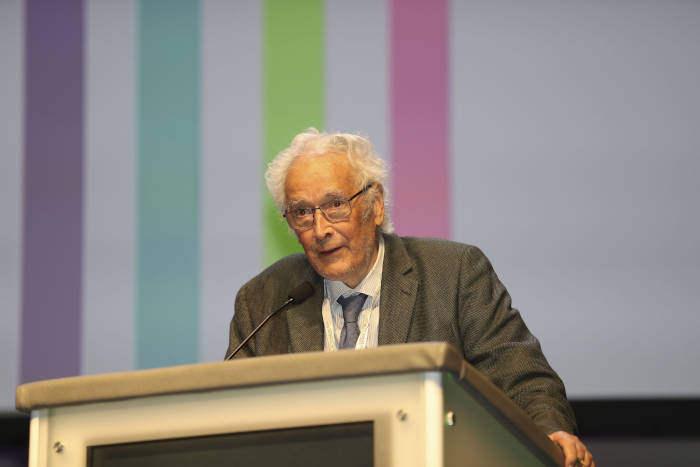Schools and Colleges - Demo Kit

We have a superconducting levitation demonstration kit available for loan to schools and colleges. We loan this on a first come first served basis for up to a week at a time. This contains everything that you need (apart from liquid nitrogen ! ) for a demo that is not normally found in a school science lab. We regret we can only loan this kit to suitably qualified science teachers within schools and colleges since the demonstrator must be competent to risk assess the demonstration. An instruction leaflet and an exemplar Risk Assessment and COSHH assessment are included in the kit. If you are interested please email us to reserve a slot.
Additionally we try to supply bare samples to schools on request for those teachers who are happy to assemble their own demonstration. Please enquire as to availability and cost at the e-mail address given below.
Frequently Asked Questions from Schools...
Where can I get liquid Nitrogen?
If your school does not have access to LN2 good potential sources (and of advice on safe handling) could be your local hospital or university science department. Liquid nitrogen is also used by metal working companies, in the production of float glass and as a source of nitrogen gas where large quantities are required. Liquid Nitrogen can be sourced from gas suppliers such as BOC or Air Products, who also supply safety training and advice, although this is probably not economic for the quantities required for a single demonstration.
Why do we not use the term "Quantum Levitation"?
Recently a number of videos and web pages have appeared which refer to the effects we describe on this page in Type-II superconductors as something called "Quantum Levitation". We had not heard of this term before and neither had most of our colleagues in the superconductivity community. However, rest assured that this is simply a newly coined, and somewhat misleading term, for levitation due to the pinning of flux vortices in a superconductor. The term is particularly unhelpful since flux pinning can suspend a magnet beneath a superconductor as easily as levitating one.
Superconductivity Demonstrations in Action
Paul Sapple, a Ogden Trust Science Officer, used our superconducting bulks to run a very popular demonstration of the meissner effect at the recent Association for Science Education Conference. We were please to hear that this demonstration was very popular and received a steady stream of visitors during the conference.
His demonstration using a spherical magnet, and a keen stand visitor, is shown at left. This year the bulk superconductivity group has supplied a number of different UK schools and science outreach organisations with either a loan demonstration kit or superconducting bulks.
(Photo © Paul Sapple, University of Liverpool 2012. We appreciate Paul letting us have a copy of the photo and the student's parents giving us permission to post it.)
Rotating Platform
A 4th year project student in the group, Ben Cator, has recently constructed, as part of his project work, a superconducting levitating platform with a load capacity in excess of 100 kg. This system is a superb demonstration of how superconductors can be used to make a low friction bearing that both levitates and stabilises. A similar, but much more refined, bearing is used in a superconducting flywheel system made by Boeing.
The rotating platform has underneath it two tracks of powerful rare earth magnets. These tracks are supported by over 30 superconducting bulk samples. The magnetic field generated by the magnet track varies in sign across the track but remains constant along it's length. This means that the tracks can rotate, as this does not change the magnetic field seen by the superconductor, but cannot move sideways. There are no frictional losses in this system (other than air resistance to the rotation of the plate), although imperfections in the homogeneity of the magnetic field generated by the individual rare-earth magnets does cause a small amount of resistance to rotation, which eventually stops the platform rotating.
The superconducting samples are supported in a double walled aluminium tray with a polystyrene insulating layer. This prevents the liquid nitrogen boiling off too quickly and protects the floor of the laboratory!
Compared to simple superconductivity demonstrations, this system is relatively heavy and not easily transportable, as well as requiring a fairly large amount of liquid nitrogen to cool the superconductors to their operating temperature (77 K or -196 °C). This system is currently in use for outreach activities. It is potentially available for loan.
Click here for more photos and video of the platform in action....
UK Universities
The high quality superconducting bulks made by the group allow clear demonstration of superconducting levitation using only a NdFeB magnet and a polystyrene tray of liquid nitrogen. This makes for a striking demonstration of the superconducting levitation and suspension effect in a Type-II superconductor due to the pinning of vortex lines in the material (this is often but entirely incorrectly described as the Meissner effect which only occurs for very small magnetic fields in these materials). Consequently, the group is always keen, where possible, to supply our colleagues within the UK academic community with superconducting bulks in small numbers for teaching purposes. If you are interested in obtaining a sample please email us at the address below.

